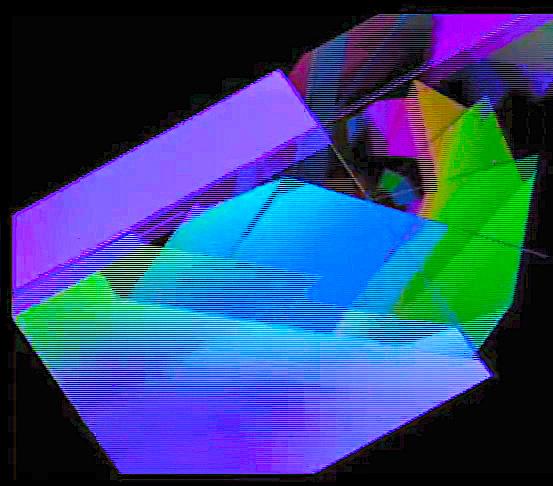Review: Sax Coupling Satisfies
A goldmine of sonic effects from Quasar, Upstream quartets
By STEPHEN PEDERSEN Arts Reporter
Sax quartets have legs. While never exactly in fashion, they have never been out of it either. They are good to play romantic music, and un-matched, outside of percussion instruments, for playing contemporary music.
The sound of a sax "consort" — soprano, alto, tenor and baritone saxes — is a perfect blend, a rich, sonorous, vibrant sound with an astonishing dynamic range from just barely audible to ear-splitting. At the same time, the four instruments can be made to emit a repertoire of shrieks, squeaks, squeals, multiphonics and key and tongue slaps, which makes them a goldmine of sonic effects.
The versatility of the saxophone lends itself to virtuosic runs and turns and rippling passage work, while the range of attacks of which it is capable gives it a huge percussive edge over strings and other winds.
All these qualities came together in force Tuesday night in Dalhousie University’s Ondaatje Hall for Upstream’s Sax Face Off program in which the incomparable Quasar sax quartet Marie-Chantal Leclair (soprano), Mathieu Leclair (alto), Andre Leroux (tenor), Jean-Marc Bouchard (baritone), met and mingled musically with Upstream’s Halifax Sax of Dani Oore (soprano), Chris Mitchell (alto), Paul Cram (tenor) and Dawn Hatfield (baritone).
While a mistake on my part about the 7:30 start time caused me to miss the first two works on the program — Quasar’s Procession (2002) by Jean-Francoise Laporte, and Halifax’s Melcante by Chris Mitchell — the remaining six works left little to wonder about in the way of possible sax licks.
The music ranged from Oore’s Dixie-land Ocelot, a sort of Tiger Rag in the Rain Forest, to Klaus Torstensson’s monumentally demanding Licks & Brains I, a score so dense with notes and effects — timed squeaks, pointillistic counterpoint over quivering measured vibratos, instant shifts of texture and style and a thesaurus of sax techniques.
Impressively, the Quasar players kept steely control over this unwieldy music, endowing it with shape and energy in resonant and exact ensemble playing — even when the notes were attacked seemingly at random in perfect rhythmic unison with flawless intonation. One of the players told me afterwards it took them four years to learn the work.
Ocelot featured solos from all four Halifax Sax players, with Oore showing an increasingly impressive ease and mounting rhythmic excitement in his hot improvisation. The piece began and ended with a chorus of jungle roars, whistles, chirps and squeals from the uninhibited audience, invited by Oore to take part.
Cram’s Four Horseman began with a four-beat rhythmic framework into which running diatonic lines flew like ribbons, sometimes in unison, at others independently in an invigorating melee of free-wheeling, contrapuntal energy.
The two sax quartets combined for the final two pieces. In Bouchard’s In and Out the eight players positioned themselves around the audience like the cardinal points of a stereophonic mandala, panning the sound around and over our heads in response to gestures from Dalhousie composer Jerome Blais, who stood in the centre and conducted.
The last piece, Conductus I, written and directed by Blais, used a more conventional, semi-circular setup at the front of the auditorium. It was a conducted improvisation in which fragments of renaissance melody and dance forms, such as an almost unaltered estampie, were integrated into clapping, rhythmic key slaps, and free blowing, leading to an impressively full-out climax.
—
posted




